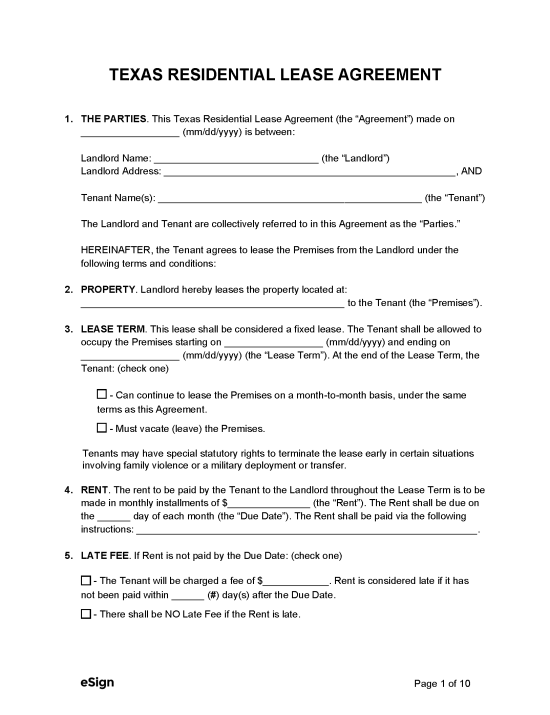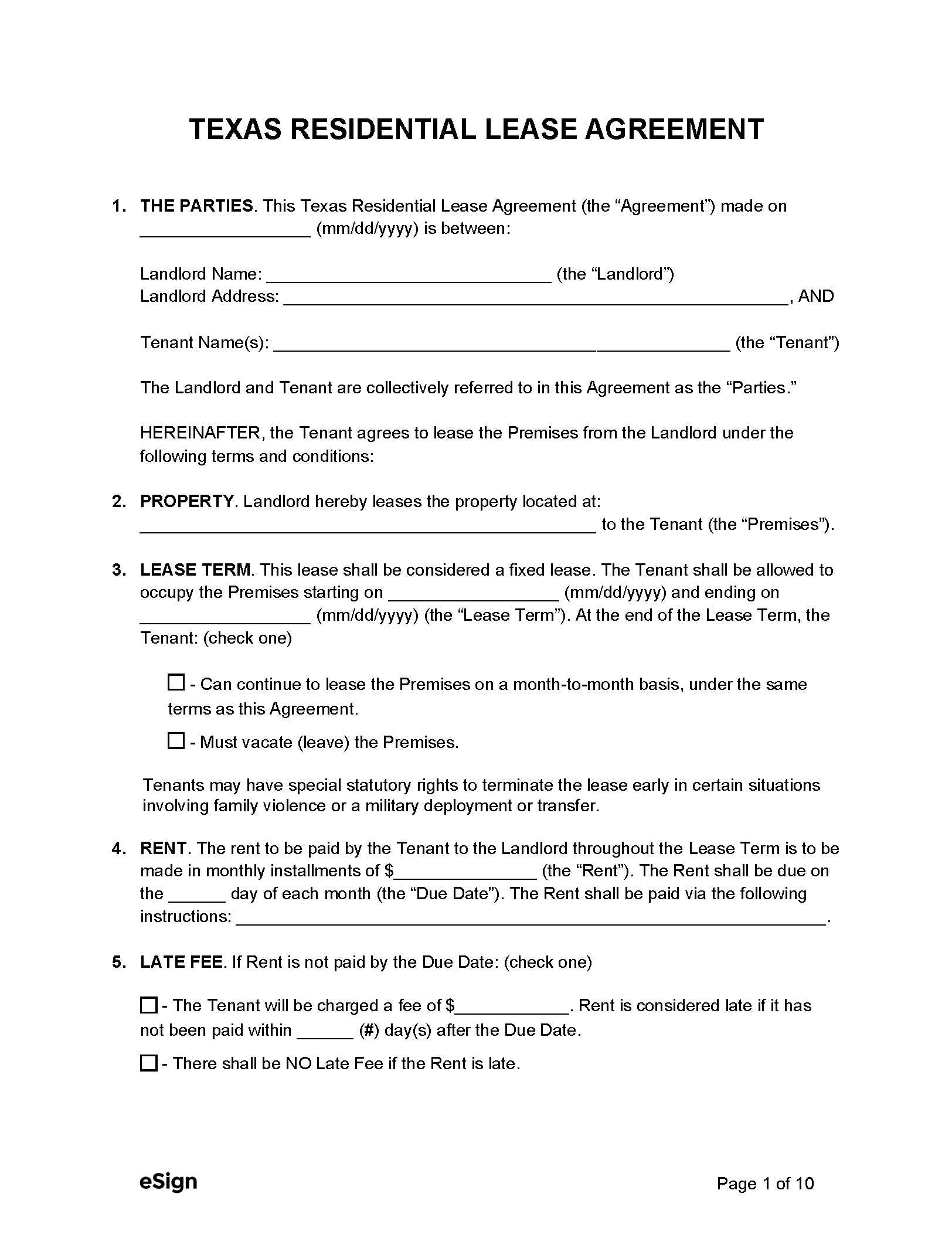Required Disclosures (7)
- 100-Year Flood Plain (PDF) – The landlord must provide a notice that states whether they are aware that the dwelling is located in a 100-year floodplain according to FEMA and if it has flooded within the previous 5 years.[1]
- Lead-Based Paint Disclosure (PDF) – This document discloses the presence of toxic paint on the premises of a rental unit built before 1978.[2]
- Ownership and Management – The landlord must inform the tenant of the names and addresses of the dwelling titleholder and any entity responsible for managing the dwelling.[3]
- Right to Interrupt Utilities – Landlords who want the option to turn off electricity for a nonpaying tenant must disclose this option in the lease agreement. Notice must be given to the tenant before the shutoff.[4]
- Special Conditions to Cancel Agreement – The lease agreement must include the following statement: “Tenants may have special statutory rights to terminate the lease early in certain situations involving family violence or a military deployment or transfer.”[5]
- Tenant’s Remedies – The rental agreement must contain language that describes a tenant’s rights with regard to repairs that go unremedied.[6]
- Texas Parking Rules Addendum (PDF) – Landlords of multi-unit complexes must give new tenants a written disclosure detailing the parking and towing policies before signing the lease.[7]
Security Deposit Laws
- Maximum Amount ($) – No statutory limit.
- Returning to Tenant – 30 days.[8]
Rent Grace Period
A two-day grace period must be given before late fees can be charged to a tenant.[9]
Landlord Resources
- Property Code – Title 8, Chapter 92 (Residential Tenancies)
- Handbook (Guide) – Landlords and Tenants Guide

